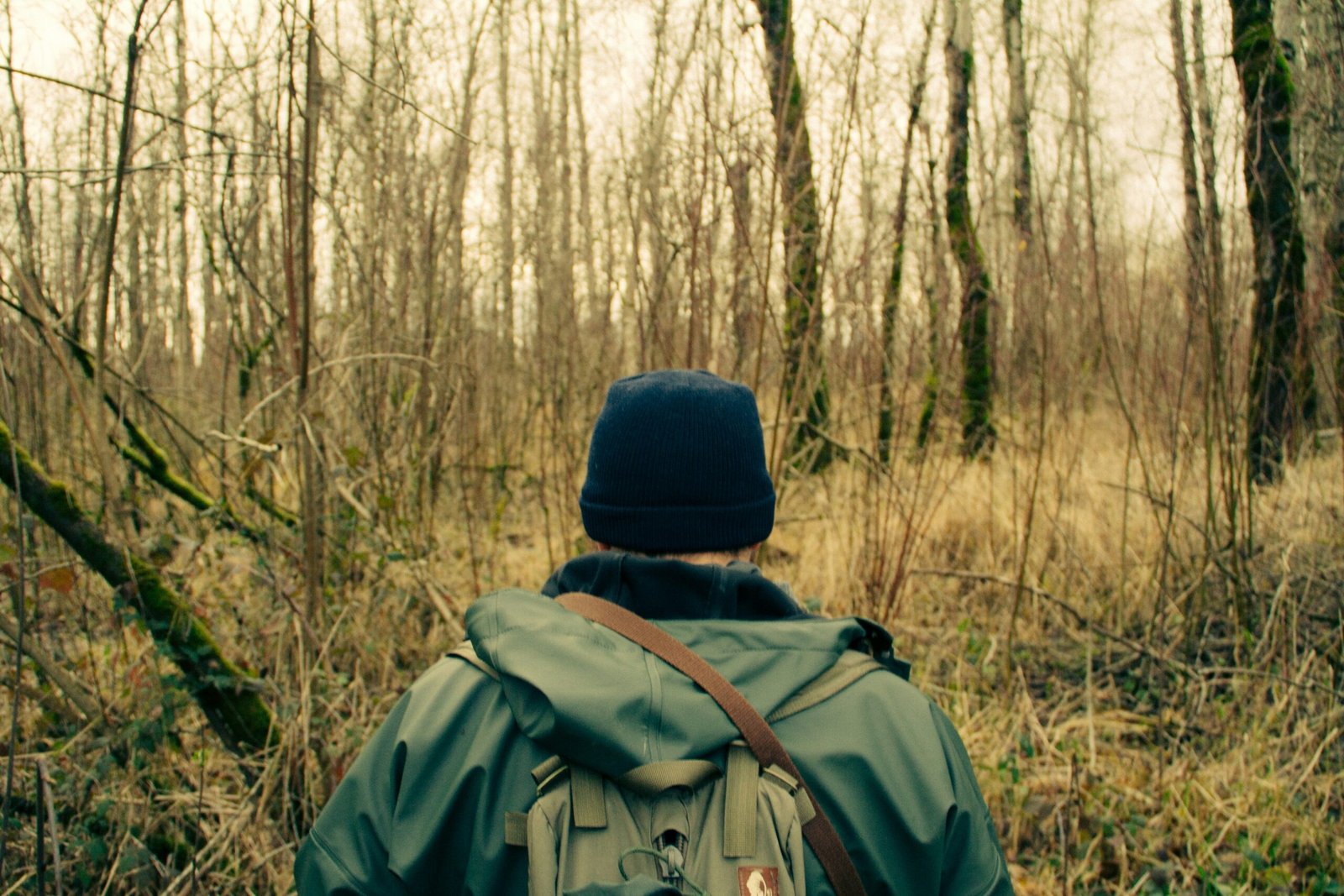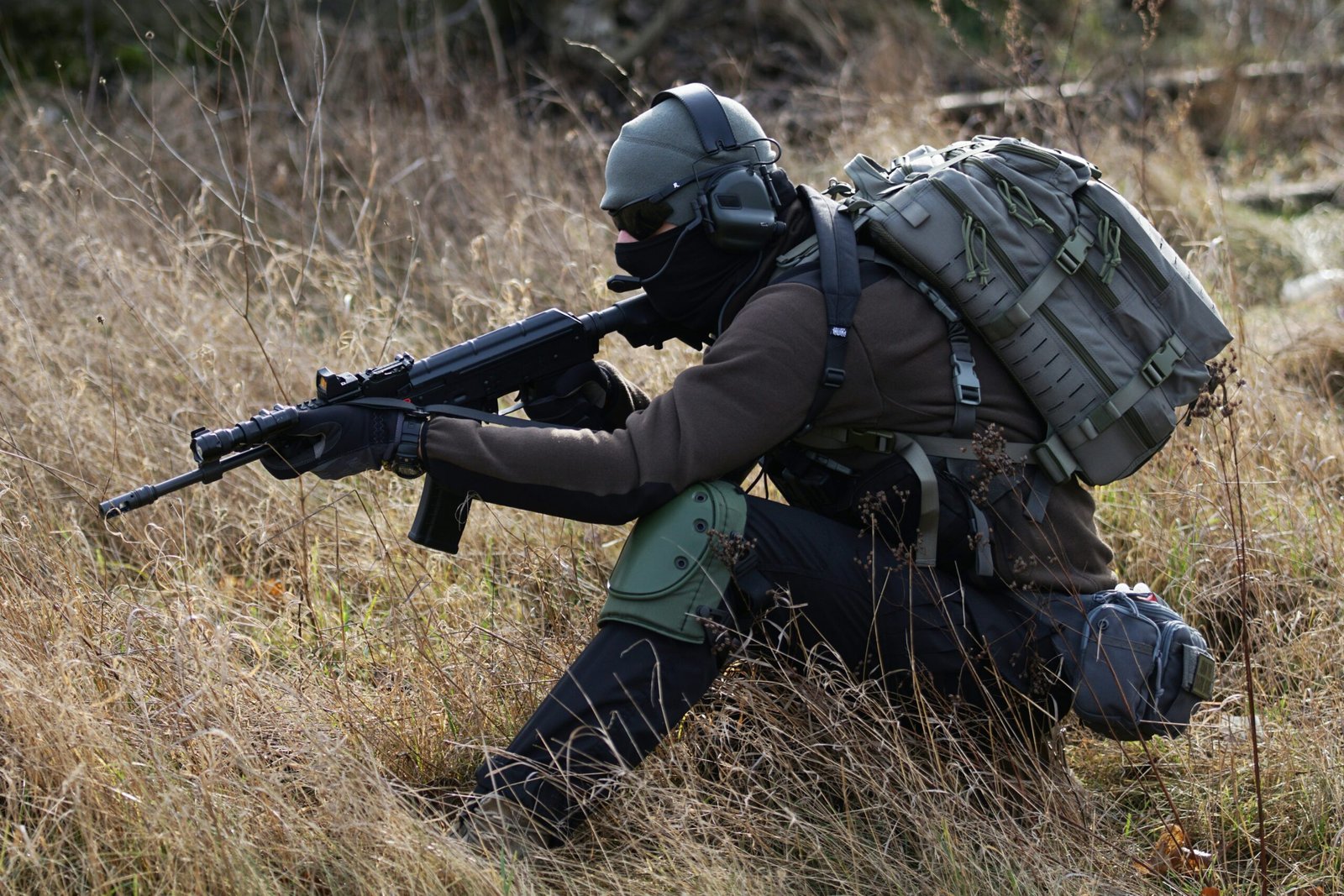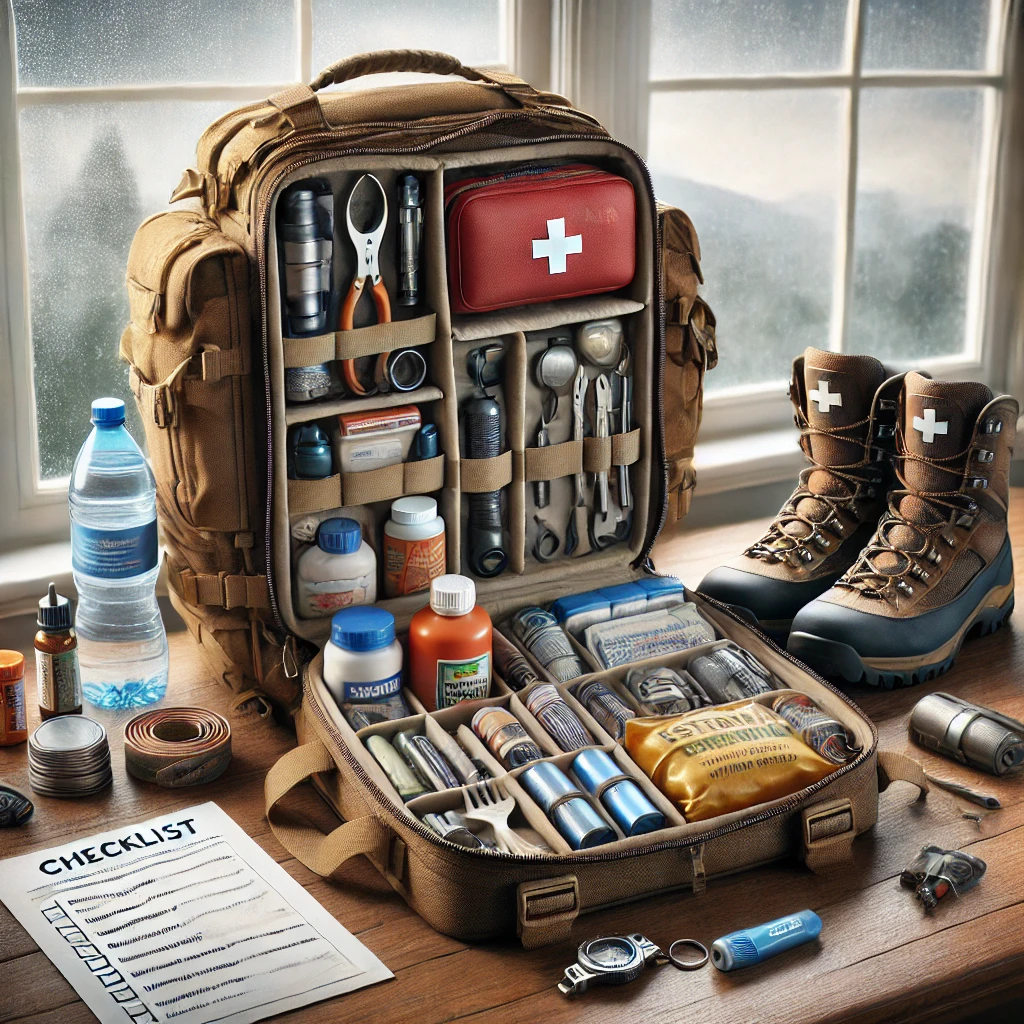
Introduction to Survival Backpacks
Survival backpacks have become an essential component for outdoor enthusiasts, preppers, and survivalists alike. These specially designed packs are not merely containers for gear; they serve a critical purpose in ensuring one’s safety and preparedness in the face of unforeseen circumstances. Whether venturing into the wilderness for a multi-day hiking trip or preparing for emergency situations, a well-equipped survival backpack is a vital tool that can significantly enhance your chances of survival.
The purpose of a survival backpack is to consolidate all necessary equipment and supplies, enabling users to be ready for various emergencies such as natural disasters, sudden weather changes, or even prolonged outdoor activities. It functions as a portable cache of essentials, including food, water, first aid supplies, navigation tools, and protective clothing, all of which can be crucial during a survival situation. Furthermore, these packs are ideally suited for both short-term and long-term scenarios, allowing individuals to tailor their contents based on specific needs and anticipated challenges.
When assembling a survival backpack, several key considerations should be taken into account to maximize effectiveness. Firstly, the size and weight of the backpack play a significant role, as they should accommodate both the intended duration of use and the planned activities. Additionally, the backpack’s design needs to facilitate easy access to essential items while maintaining organization, which can be achieved through various compartments and pockets. The quality and durability of materials are equally important; a sturdy, weather-resistant backpack can withstand harsh conditions and prolong the life of its contents. Lastly, prioritizing personal needs and preferences, such as individual physical condition, specific environment, and the types of scenarios likely to be encountered, will greatly inform the selection and arrangement of gear within the backpack.
Essential Survival Gear: The Basics
When preparing a survival backpack, it is crucial to equip it with essential gear that can significantly increase your chances of surviving in the wilderness. The foundational items should include a water purification system, food supplies, a first-aid kit, a multi-tool, and fire-starting gear.
Water is vital for survival, making a water purification system an indispensable part of your backpack. Whether it’s a filtration system or purification tablets, having access to clean drinking water can prevent dehydration, which is one of the most immediate risks in survival scenarios.
Equally important are food supplies. These should consist of non-perishable items such as energy bars, dehydrated meals, and other lightweight provisions. Food not only sustains energy levels but also contributes to morale, which is essential when facing adverse situations. Portable and calorie-dense options ensure that you are not burdened by extra weight while still having enough sustenance.
A first-aid kit is another fundamental component of any survival backpack. This kit should be well-stocked with bandages, antiseptic wipes, pain relief medication, and other necessary medical supplies. Accidents can happen at any moment, and being prepared to address such situations can significantly enhance your capacity to remain safe and healthy in the wilderness.
A multi-tool is an exceptional addition, offering versatility in a compact form. It combines numerous functionalities such as cutting, screwing, and opening bottles, allowing flexibility in facing various challenges while conserving space. Selecting a high-quality multi-tool can make a significant difference in how effectively you can navigate survival tasks.
Lastly, fire-starting gear is essential for warmth, cooking, and signaling for help. Whether it involves waterproof matches, lighters, or fire starters, having the means to create warmth will be invaluable in emergency situations. The combination of these basics provides a solid foundation for any survival backpack.
Shelter and Sleeping Essentials
In survival situations, the importance of having adequate shelter and sleeping essentials cannot be overstated. A well-chosen shelter not only provides protection from the elements but also enhances overall comfort and tranquility, crucial for mental clarity. Various types of shelters are readily available, such as tents, tarps, and emergency bivy bags, each designed to address specific needs and conditions.
Tents are a popular choice for their stability and ability to accommodate multiple people and gear. Depending on the climate and terrain, campers can select between different designs, including lightweight backpacking tents or robust four-season tents. Tents provide a reliable barrier against rain, wind, and insects, making them a go-to option for extended survival scenarios.
On the other hand, tarps are multipurpose tools that offer versatility and can be set up in various configurations to create a makeshift shelter. They are particularly advantageous for minimalist packers who wish to reduce weight while maintaining some waterproof coverage. Tarps are also useful as ground covers, helping to keep bedding dry and insulated from the cold ground.
Emergency bivy bags are another essential resource in a survival backpack. These lightweight, compact bags can be a lifesaver in dire situations, providing immediate warmth and wind resistance. While they may not offer the space of a traditional tent, their portability makes them an attractive option for those traveling light or needing quick protection from the elements.
In conjunction with shelter, the selection of portable bedding options is vital for quality rest. Sleeping bags are specifically designed to retain heat and are available in varying insulation types, catering to different weather conditions. Sleeping mats further enhance comfort by providing insulation from the ground and cushioning for muscles and joints, which is crucial for restorative sleep in challenging environments.
Ultimately, investing in the right shelter and sleeping essentials can significantly improve chances of survival. By selecting the appropriate gear, individuals can ensure a warm, dry environment, crucial for both physical well-being and mental resilience.
Clothing and Personal Gear
When preparing a survival backpack, selecting the right clothing and personal gear is crucial, as these elements can significantly impact your comfort and mobility in various situations. The first consideration should be the choice of fabrics appropriate for different weather conditions. Moisture-wicking materials, synthetic fabrics, or merino wool can help manage perspiration, while insulating layers, such as fleece or down jackets, are essential for preserving body heat in colder climates. It is advisable to steer clear of cotton, which retains moisture and loses its insulating properties when wet.
Layering techniques are pivotal in achieving versatility with your clothing. These techniques allow you to adapt to fluctuating temperatures and varying activity levels. The base layer, which sits next to the skin, should effectively wick moisture away, while the middle layer provides insulation. The outer layer ideally serves as a waterproof or windproof barrier. By combining these three layers, you can ensure that your body remains dry and comfortable, irrespective of the weather.
In addition to clothing, it is prudent to include essential personal gear within your survival backpack. Among these items, a reliable knife plays a multifunctional role in tasks ranging from food preparation to shelter construction. A whistle can serve as a signaling device in emergencies, providing a loud and effective means to attract attention. Additionally, navigational aids, such as a compass and a map, are vital for ensuring you can orient yourself and navigate through unfamiliar terrains. By prioritizing practicality and mobility in your selection of clothing and personal gear, you can enhance your survival experience significantly.
Cooking and Food Preparation Supplies
In survival situations, cooking and food preparation supplies play a crucial role in ensuring sustenance and maintaining energy levels. A portable cooking stove is an essential item that allows you to prepare meals efficiently in various environments. These stoves vary in design, fuel type, and size; hence, selecting one that suits your needs is vital. Lightweight options such as compact gas stoves or multi-fuel stoves offer the flexibility to cook in diverse settings while minimizing weight in your survival backpack.
Cookware is another critical area to consider. Investing in a durable set of cookware that can withstand high temperatures and rough handling is recommended. Stainless steel or hard-anodized aluminum pots and pans are ideal, as they are not only lightweight but also provide excellent heat conduction. It is also beneficial to include a, non-stick frying pan for versatile cooking options. Additionally, collapsible bowls and lightweight plates can help conserve space and weigh less in your backpack.
Utensils should not be overlooked, as having the right tools can make food preparation more manageable. A sturdy knife is perhaps the most important utensil, useful for cutting, slicing, and food preparation. However, do not forget the value of a spork—a combined spoon and fork—or multi-tools that can eliminate the need for multiple items. Choosing multifunctional tools not only saves weight but also provides essential capabilities for various cooking tasks.
Proper food storage is just as important as cooking. Consider incorporating resealable bags or vacuum-sealed containers for dried foods and rations, which keep items fresh and prevent spoilage. When selecting food rations for your survival pack, opt for lightweight and easy-to-cook items, such as freeze-dried meals, protein bars, and travel-ready snacks. These options will ensure that you have nutritious meals that require minimal preparation during emergencies.
Navigation and Communication Tools
In survival situations, the ability to navigate effectively and communicate with others is essential. A well-equipped survival backpack should include various navigation and communication tools to enhance safety and increase the chances of successful rescue. Among the most fundamental tools are compasses and maps. A traditional compass is invaluable for orienting oneself in the wilderness, providing a reliable means of determining directions. Coupled with a topographic map, individuals can better understand the terrain, identify landmarks, and navigate through challenging landscapes.
In recent years, GPS devices have become increasingly popular for navigation in survival scenarios. These electronic tools offer precise location data and often come equipped with mapping software to facilitate easier route planning. However, reliance solely on electronic devices can be risky, as they may fail due to battery depletion or technical issues. Thus, it is prudent to have alternative navigation methods, such as compasses and maps, readily available.
Communication cannot be overlooked in survival preparedness. A whistle is a lightweight yet effective tool for signaling for help. Its sound can travel much farther than a person’s voice, making it an excellent choice for attracting attention. In addition to a whistle, consider including a mirror for signaling during daylight, as sunlight reflecting off a mirror can be visible over great distances.
Maintaining contact with others is crucial during emergencies. Satellite phones or personal locator beacons (PLBs) can provide reliable communication channels even in remote areas where traditional cellular signals are unavailable. These devices enhance safety by allowing users to transmit their location and require assistance, increasing the likelihood of a timely rescue. In summary, a comprehensive selection of navigation and communication tools is imperative for anyone assembling a survival backpack, ensuring preparedness for unforeseen challenges in the wild.
First Aid Supplies and Health Essentials
In any survival situation, having a well-stocked first aid kit is crucial for addressing medical emergencies. The inclusion of first aid supplies in your survival backpack not only promotes safety but also enhances your ability to respond to injuries and health issues while in the wilderness. A comprehensive first aid kit should contain items designed for treating a variety of injuries and ailments.
At a minimum, your first aid kit should include an assortment of bandages, in various sizes, to cover wounds and prevent infection. Adhesive bandages are essential for small cuts and scrapes, whereas larger gauze pads can be utilized for more significant injuries. It is advisable to have medical tape on hand to secure gauze and other dressings.
Antiseptics, such as alcohol wipes or hydrogen peroxide, are vital for disinfecting wounds before applying bandages. They help reduce the risk of infections, which can be particularly concerning in the outdoors where access to medical facilities may be limited. Pain relievers, such as ibuprofen or acetaminophen, should also be included to manage discomfort due to injuries or environmental factors.
Moreover, some outdoor adventurers may encounter specific dangers, such as snake bites. Including a dedicated snake bite kit in your supplies is prudent for those traversing areas where snakes are common. This kit typically contains suction devices and other tools designed to assist in emergency situations. Understanding the appropriate use of each first aid item is equally important. Familiarize yourself with basic first aid techniques, such as how to clean and dress a wound, to ensure that you are prepared for medical emergencies when they arise.
Careful attention to stocking your survival backpack with essential first aid supplies can mean the difference between a manageable situation and a serious health crisis. In conclusion, prioritizing health essentials in your survival strategy significantly boosts the likelihood of maintaining wellness while navigating potential threats in the great outdoors.
Multi-Purpose Tools and Survival Equipment
In any survival situation, having the right tools can be critical. Multi-purpose tools and survival equipment are designed to provide versatility and convenience, ensuring that one item can serve multiple functions. This ability to combine several tools into one compact solution allows individuals to save valuable space and weight in their survival backpacks, which is essential for mobility and efficiency during emergency situations.
One of the most notable examples of multi-purpose tools is the multi-tool itself. Typically featuring pliers, screwdrivers, knives, and other essential tools, a multi-tool can dramatically expand an individual’s capabilities without the burden of carrying separate items for each function. The integration of various tools into a single device not only enhances user efficiency but also enables quick access to necessary tools when every second counts.
Another important piece of survival equipment is the survival shovel. This tool goes beyond traditional digging and can feature functions such as a saw edge, bottle opener, and even a hammer. Having a survival shovel in one’s backpack is invaluable, providing the ability to construct shelter, prepare firewood, and perform other essential tasks while outdoors. Such versatility ensures that it can be utilized in a variety of scenarios, making it a vital addition to any survival kit.
Paracord is yet another essential item worth including in a survival backpack. This lightweight, strong rope can be used for an array of purposes, including building shelter, securing gear, creating fishing lines, or even crafting emergency tourniquets in critical situations. The adaptability of paracord makes it a highly functional material that can contribute significantly to one’s survival efforts.
Ultimately, selecting multi-purpose tools and survival equipment is a strategic decision that can enhance one’s preparedness for various emergencies. By incorporating these versatile items into a survival backpack, individuals can ensure they are well-equipped to handle diverse challenges, minimizing the physical burden while maximizing operational capabilities.
Maintenance and Regular Updates of Your Gear
Maintaining and regularly updating your survival backpack is crucial to ensuring its effectiveness when faced with unexpected emergencies. The gear inside your backpack should be subjected to routine inspections for signs of wear and tear. Regular checks will help identify damaged equipment, which could undermine your preparedness in critical situations. Pay special attention to items such as ropes, zippers, and fasteners, as these components are essential for the functionality of the entire gear set.
Furthermore, regularly updated food supplies are another essential consideration for your backpack maintenance. Food items can have expiration dates that, if overlooked, could lead to spoilage, rendering your emergency rations unusable. It is advisable to replace perishable items on a set schedule, as well as periodically review the selection of non-perishable foods to ensure they meet your dietary needs and preferences. By routinely evaluating the contents of your backpack, you can ensure that you have adequate provisions when the need arises.
Another significant aspect to consider is the seasonal changes that may affect your survival requirements. For instance, winter might necessitate equipment and clothing such as thermal blankets or additional layers, while summer could require hydration gear and items for sun protection. Adjusting the contents of your backpack in accordance with the changing seasons is essential for maintaining a kit that is fully responsive to varying environmental conditions.
Finally, as you acquire new skills, be sure to update your survival backpack to reflect these enhancements. New techniques often require additional tools or supplies, which can significantly improve your preparedness. Establish a habit of reviewing and updating your gear regularly, allowing your survival backpack to remain a reliable and robust safeguard in times of need.


